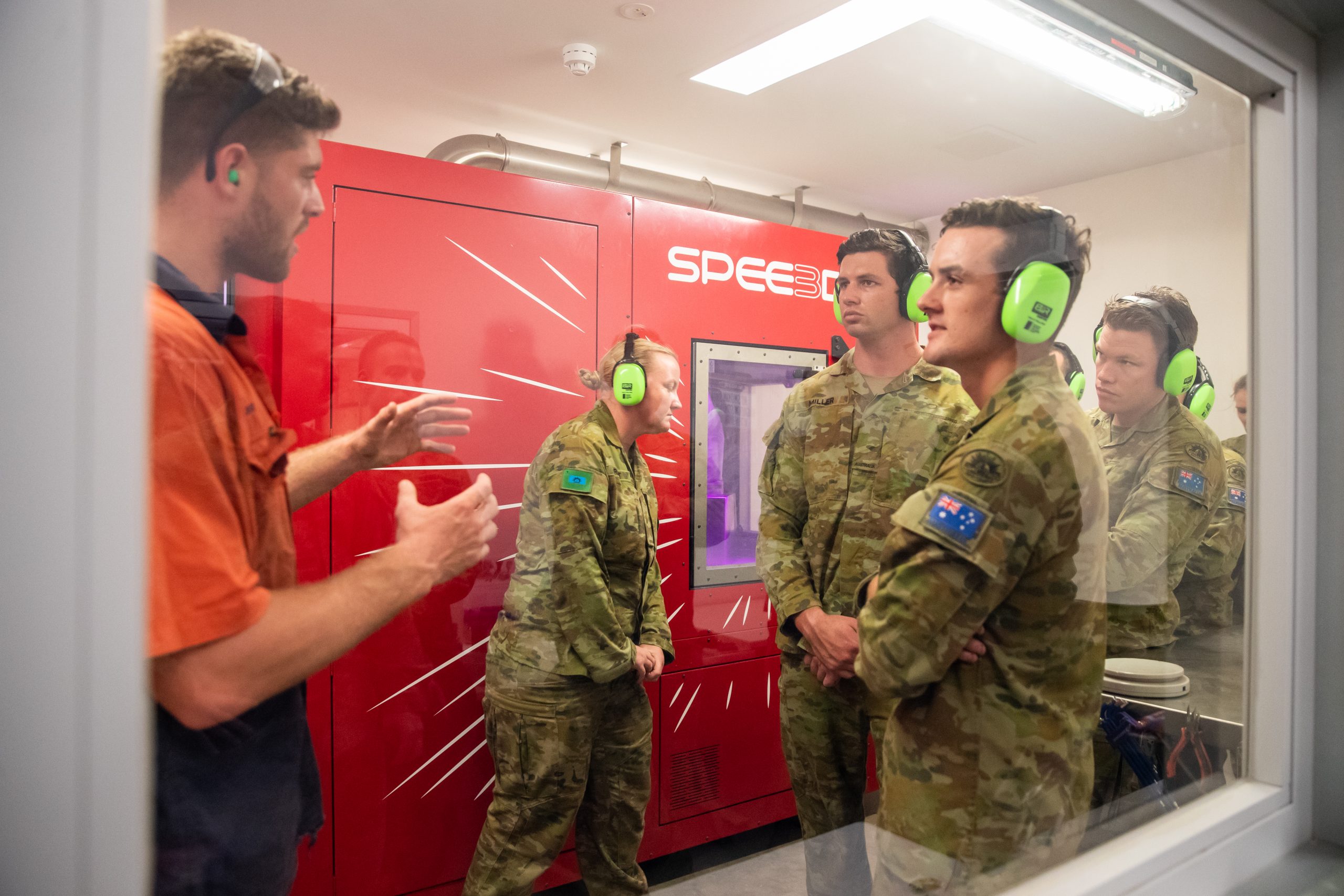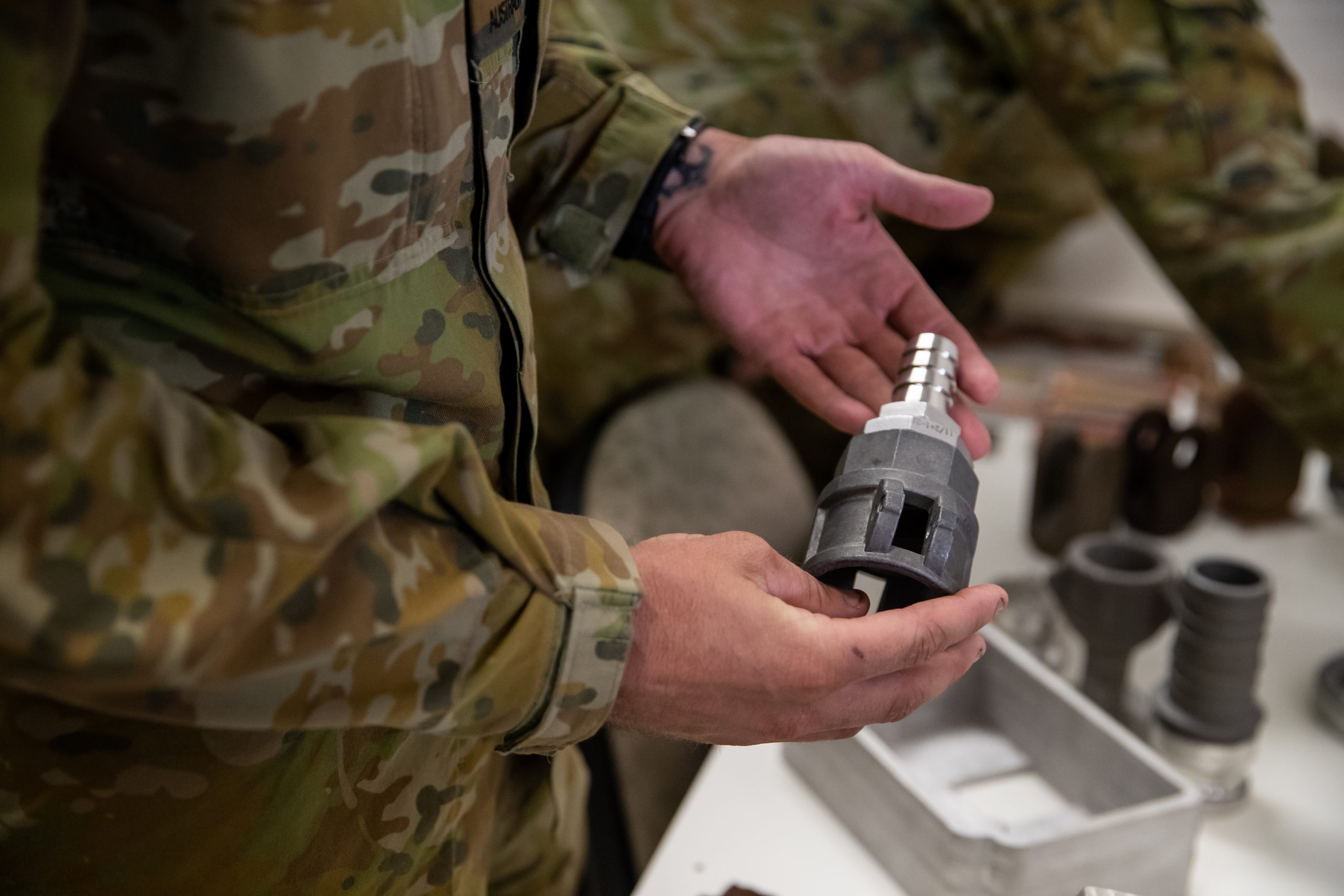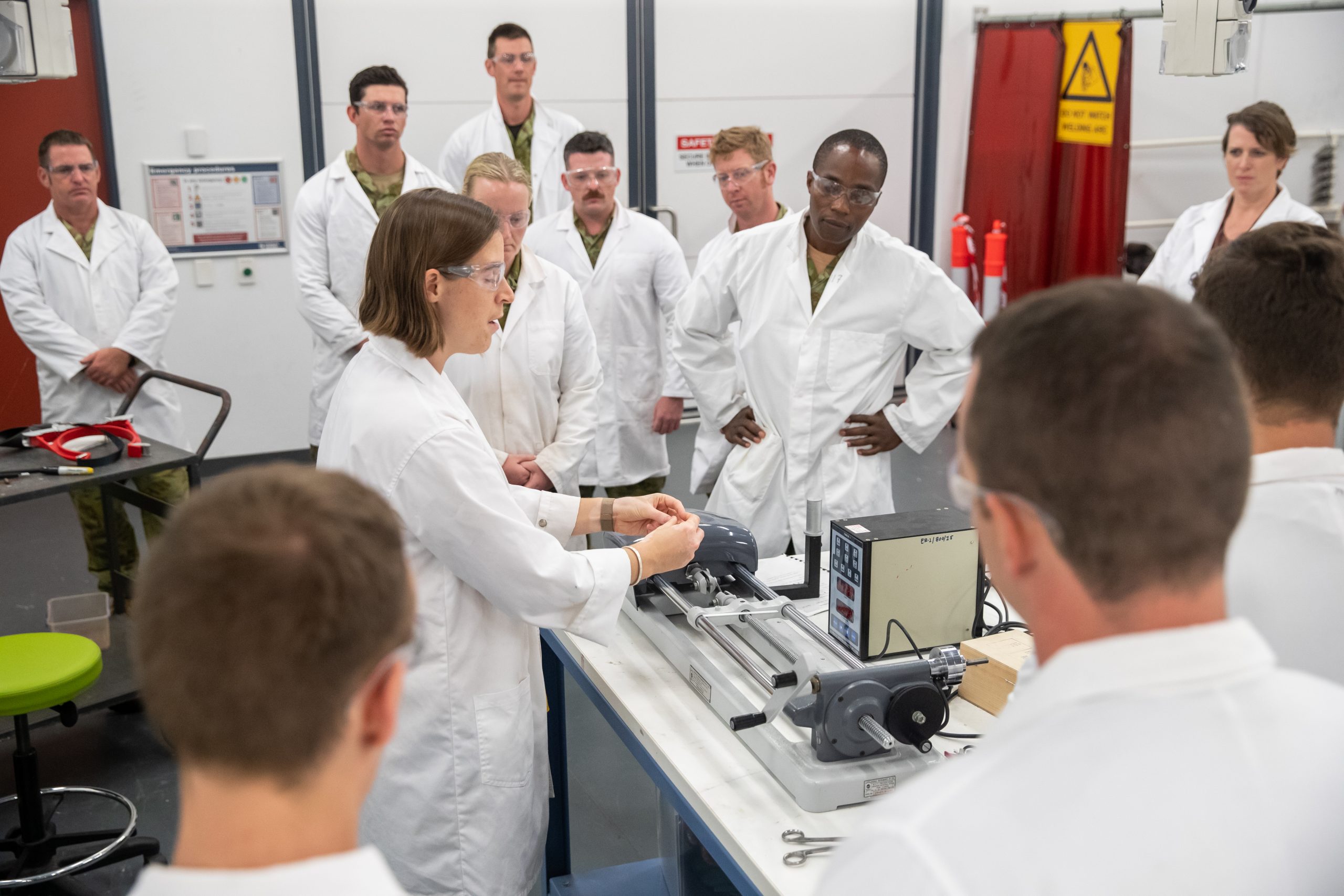3D printing will soon be assisting members of the military in Australia, as a 12-month pilot training program has begun in a $1.5 million partnership with SPEE3D and Charles Darwin University (CDU).
The Australian Minister of Defense Industry, the Hon. Melissa Price MP, has announced that soldiers mostly from 1st Combat Service Support Battalion (1 CSSB) will be training in 3D printing, using the large-format WarpSPEE3D 3D metal printer to be on-site at Darwin’s Robertson Barracks—and then deployed for field use as needed for military exercises by the Australian Army.
SPEE3D CEO Byron Kennedy points out that this is ‘another significant announcement’ for both the military and his company:
“This program with the Australian Army, in parallel with a similar project with the Royal Australian Navy announced in November last year, will enable the Australian Defense Force to grow our sovereign capability and lead the world in the field of additive manufacturing.”
With the new ability to 3D print parts on-demand with innovative metal technology, the goal is for the Australian Army to ‘enhance lines of logistics, ‘according to a recent press release sent to 3DPrint.com.
This trial represents the culmination of a proposal submitted last year, with the mission to overhaul the supply chain for the military. Lieutenant Colonel Kane Wright, Commanding Officer 1 CSSB, explained that this initiative will allow the Army to keep up with ‘the accelerated nature of warfare.’
“This partnership with CDU and SPEE3D shows that we as an army are looking to the future and embracing advanced technologies to speed up our processes,” continued Wright. “At maturity we see it becoming an essential enabler that will redefine how logistics is employed to support our dependencies on the future battlefield.
“This will reduce the requirement to deploy with bulky holdings of multiple repair parts, hence increasing mobility and survivability and reducing time waiting for new parts to create greater resilience in the supply chain.”
The first ten weeks of training are taking place at CDU’s Casuarina Campus, with military personnel trained by researchers skilled in 3D printing, covering:
- Fundamentals of design
- 3D modeling
- 3D printing
- Testing & evaluation of developed parts
“This 3D printing technology has the potential to change the way many industries, including defense, design, manufacture and supply parts,” said CDU Vice-Chancellor and President, Professor Simon Maddocks upon visiting soldiers performing classwork. ““CDU has become a center of excellence in exploring and applying this new technology and we’re pleased to have such eager professional soldiers join us to learn this new skill set.”
The Royal Australian Navy also began a trial program last November—again, with SPEE3D and CDU, streamlining maintenance of their patrol vessels with 3D printed parts.
1 CSSB Fitter Lance Corporal Sean Barton was one of the 20 soldiers who signed on for training:
“This is a very exciting opportunity for me and very different from my regular trade as a Fitter,” Lance Corporal Barton said. “I am looking forward to getting my hands on the software, learning about the design process and being one of the first to learn how to use the technology – it’s pretty cool.”
Numerous governments are using 3D printing today and performing complex research which may allow 3D printing in remote areas, in challenging climates, and much more. What do you think of this news? Let us know your thoughts! Join the discussion of this and other 3D printing topics at 3DPrintBoard.com.
[Source / Images: SPEE3D]Subscribe to Our Email Newsletter
Stay up-to-date on all the latest news from the 3D printing industry and receive information and offers from third party vendors.
Print Services
Upload your 3D Models and get them printed quickly and efficiently.
You May Also Like
Reinventing Reindustrialization: Why NAVWAR Project Manager Spencer Koroly Invented a Made-in-America 3D Printer
It has become virtually impossible to regularly follow additive manufacturing (AM) industry news and not stumble across the term “defense industrial base” (DIB), a concept encompassing all the many diverse...
Inside The Barnes Global Advisors’ Vision for a Stronger AM Ecosystem
As additive manufacturing (AM) continues to revolutionize the industrial landscape, Pittsburgh-based consultancy The Barnes Global Advisors (TBGA) is helping shape what that future looks like. As the largest independent AM...
Ruggedized: How USMC Innovation Officer Matt Pine Navigates 3D Printing in the Military
Disclaimer: Matt Pine’s views are not the views of the Department of Defense nor the U.S. Marine Corps Throughout this decade thus far, the military’s adoption of additive manufacturing (AM)...
U.S. Congress Calls Out 3D Printing in Proposal for Commercial Reserve Manufacturing Network
Last week, the U.S. House of Representatives’ Appropriations Committee moved the FY 2026 defense bill forward to the House floor. Included in the legislation is a $131 million proposal for...







































